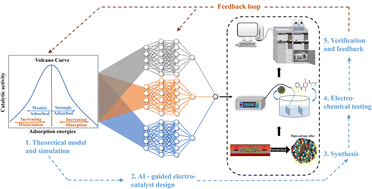AI-guided electro-decomposition of persistent organic pollutants: a long-awaited vision becoming reality?
Abstract
Existing and emerging persistent organic pollutants (POPs) constitute great threats to human health and cause great economic loss. The persistence of these chemicals made it necessary to develop proper mitigation strategies to remove or degrade them from the natural environment. Various methods for electrocatalytic degradation of POPs have been developed under lab conditions, while challenges including harmful byproducts, limited working time, etc. still limit their practical use. As the core of electrocatalytic degradation is the optimization of electrocatalysts, we outlined why high-entropy alloys could be ideal materials as catalysts in this perspective work, and further discussed how AI could be utilized in facilitating and accelerating the design–characterize–test cycle for electrocatalyst development. The potential challenges, negative effects and solutions of applying AI in this process were also discussed. By leveraging AI's power, it is expected that the vast potential of new catalyst materials including high-entropy alloys could be fully explored in a timely manner, which would contribute to developing a practical electro-degradation strategy for POP mitigation. A broad perspective of AI in designing high-entropy alloy catalysts was also included.

- This article is part of the themed collections: 2025 REV Collection from Environmental Science: Advances , Environmental Science Advances Recent Review Articles and Environmental Science: Advances – Editorial and Advisory Board Member Publications


 Please wait while we load your content...
Please wait while we load your content...